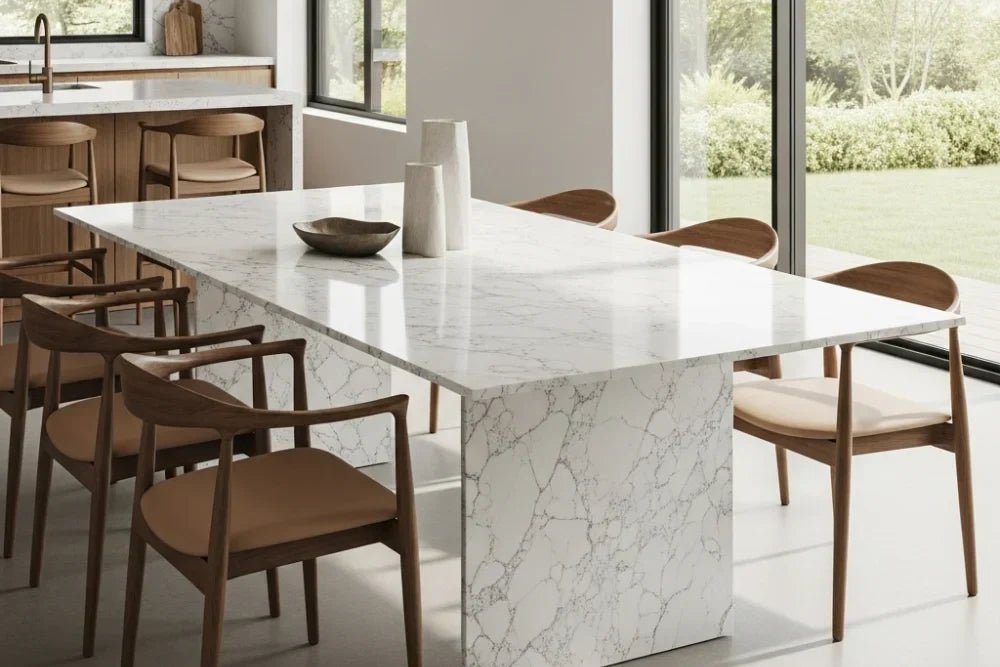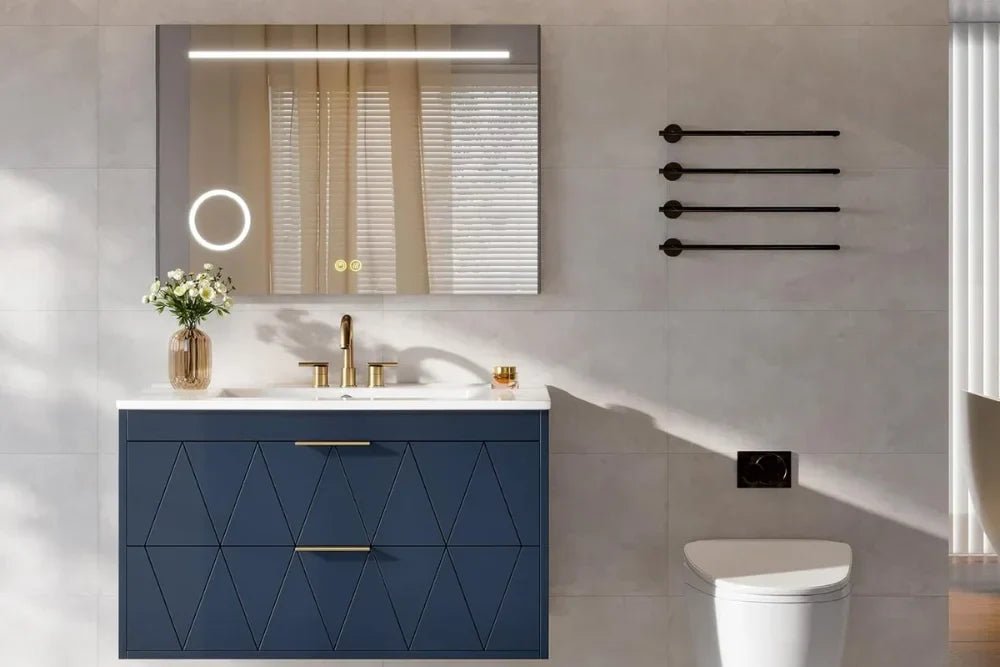When choosing a dining table, the material is just as important as the design. Two of the most discussed dining table materials at the moment are sintered stone and marble. While both offer aesthetic appeal, they serve very different needs in the modern home. This comparison breaks down the core differences to help you pick the right table for your lifestyle.
Table of Contents
What is Sintered Stone?
Sintered stone is an engineered surface made by compacting natural minerals under high heat and pressure. The result is a non-porous, ultra-durable slab that’s resistant to scratches, heat, stains, and water. Unlike traditional stone, it’s available in a wide range of colors and finishes, and its consistency makes it easy to match across furniture or built-ins. It’s also low maintenance—no sealing or special cleaners required.
This material has grown in popularity not only in modern kitchens and countertops, but also in dining tables where durability meets style.
Sintered Stone Dining Tables Pros and Cons:
✅ Highly durable and heat-resistant
✅ Easy to clean, no sealing required
✅ UV and scratch resistant
✅ Wide design options
❌ Less “natural” feel than real stone
❌ Premium options can be pricey
What Is Marble?
Marble is a natural stone formed over thousands of years. It’s prized for its rich veining and luxurious appearance—no two slabs are the same. A marble dining table instantly elevates a space with its timeless elegance and high-end feel.
However, marble is porous and more delicate than sintered stone. It’s prone to staining, scratching, and etching, especially if exposed to acidic foods or drinks. Regular sealing and gentle cleaning are required to keep it looking its best.
It's also worth noting that many dining tables today feature artificial marble (also known as cultured marble or faux marble) tabletops. These are designed to mimic the look of natural marble but often offer enhanced durability and resistance to stains and scratches, making them a lower-maintenance alternative for those who love the marble aesthetic.
Marble Dining Tables Pros and Cons:
✅ Naturally luxurious and unique
✅ Timeless appeal
✅ Adds value and character to your home
❌ Requires regular maintenance
❌ Sensitive to acids and spills
❌ Heavier and more fragile
Key Differences Between Sintered Stone and Marble
When deciding between sintered stone and marble for your dining table, it helps to look at how each material performs in daily use:
Durability & Stain Resistance
Sintered stone is engineered to be ultra-durable. It’s non-porous, meaning liquids won’t seep in, making it highly stain-resistant—even to red wine, coffee, and oils. It won’t oxidize or discolor over time and often looks shinier the longer it’s used.
Marble, being a porous natural stone, is more prone to staining and etching, especially when exposed to acids like lemon juice or vinegar. It requires sealing to maintain its look and protect the surface.
Maintenance
Sintered stone is practically maintenance-free. You can clean it with a damp cloth and mild soap—no special care needed.
Marble requires a bit more effort: it should be sealed regularly, polished occasionally, and cleaned with pH-neutral products to avoid damage.
Heat & Scratch Resistance
Sintered stone can handle high heat and won’t burn or scorch easily—go ahead and place that hot pan directly on the surface. It’s also extremely scratch-resistant.
Marble is heat-tolerant to a degree, but not as robust. It’s also softer, so it can scratch more easily, especially with sharp objects or rough-bottomed décor.
Weight & Mobility
Sintered stone is lighter in weight compared to solid marble, making it easier to move, deliver, and assemble.
Marble is much heavier and often needs extra care during handling and setup. Once placed, it’s not easy to shift around.
Price & Budget
Sintered stone tends to offer better value for the performance it provides. It’s generally more affordable than premium marble while still offering a high-end look.
Marble is considered a luxury material. If you're aiming for a classic, upscale design and have the budget, marble is a beautiful—but costly—choice.
Aesthetic Appeal
Sintered stone is manufactured, which means its pattern and color can be precisely controlled. You can choose a marble-look finish or opt for minimalist, industrial, or bold patterns with ease.
Marble, by contrast, is unique and naturally beautiful—no two slabs are alike. It offers unmatched organic charm and texture that adds depth to any space.
Best Use Cases for Each Material
Sintered Stone: Perfect for everyday dining, busy households, open kitchens, and even outdoor dining areas thanks to its weather-resistant build.
Marble: Best for formal dining rooms or homeowners who value aesthetics over convenience. Great for occasional use or as a statement piece in a luxury space.
If you’re drawn to a sleek, low-maintenance lifestyle, sintered stone is a smart bet. If visual drama and timeless beauty matter most, marble may be worth the extra effort.
Related read: How to Choose the Right Sintered Stone Dining Table
Final Thoughts
If you have children, entertain frequently, or simply want a low-maintenance table that can easily handle the daily mess, a sintered stone dining table is the perfect choice. It's perfect for a busy family to create a stylish, upscale look without the constant maintenance.
Marble dining tables are perfect for formal dining spaces or design-conscious homes.
Tribesigns offers a selection of sintered stone dining tables and faux marble table tops to suit every taste and lifestyle. Browse our selection to find the perfect combination of form, function, and style.






